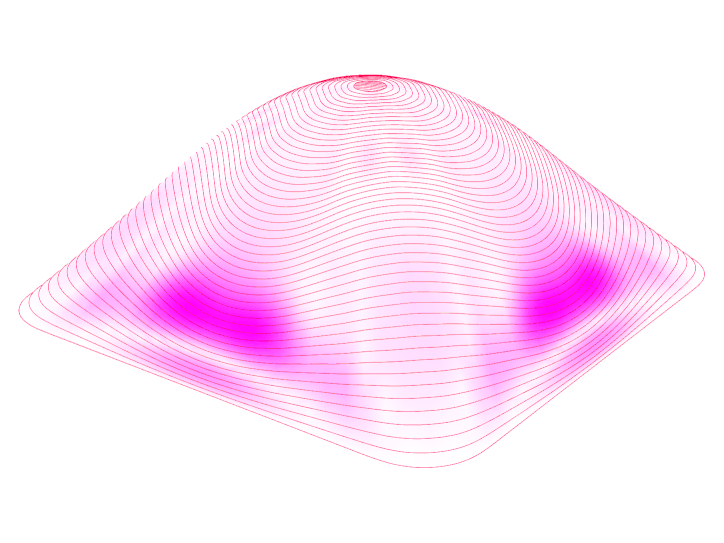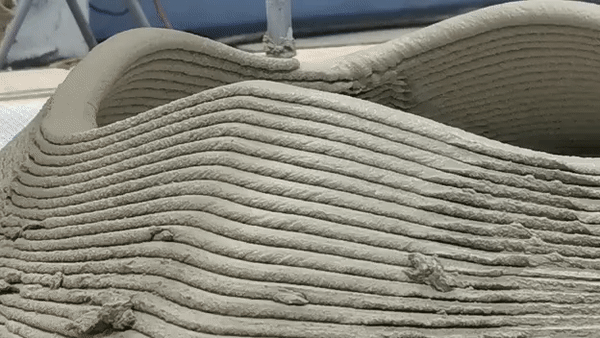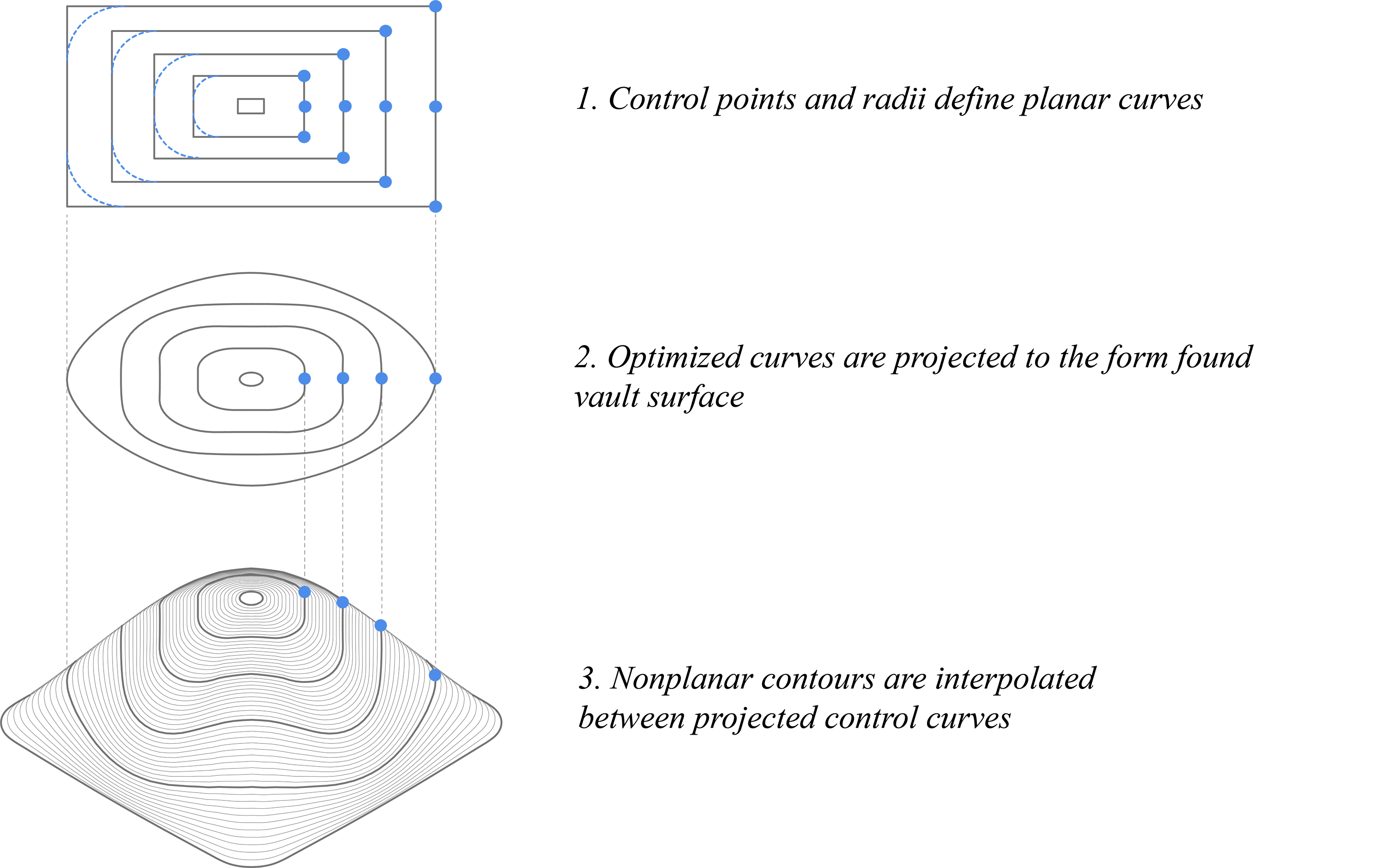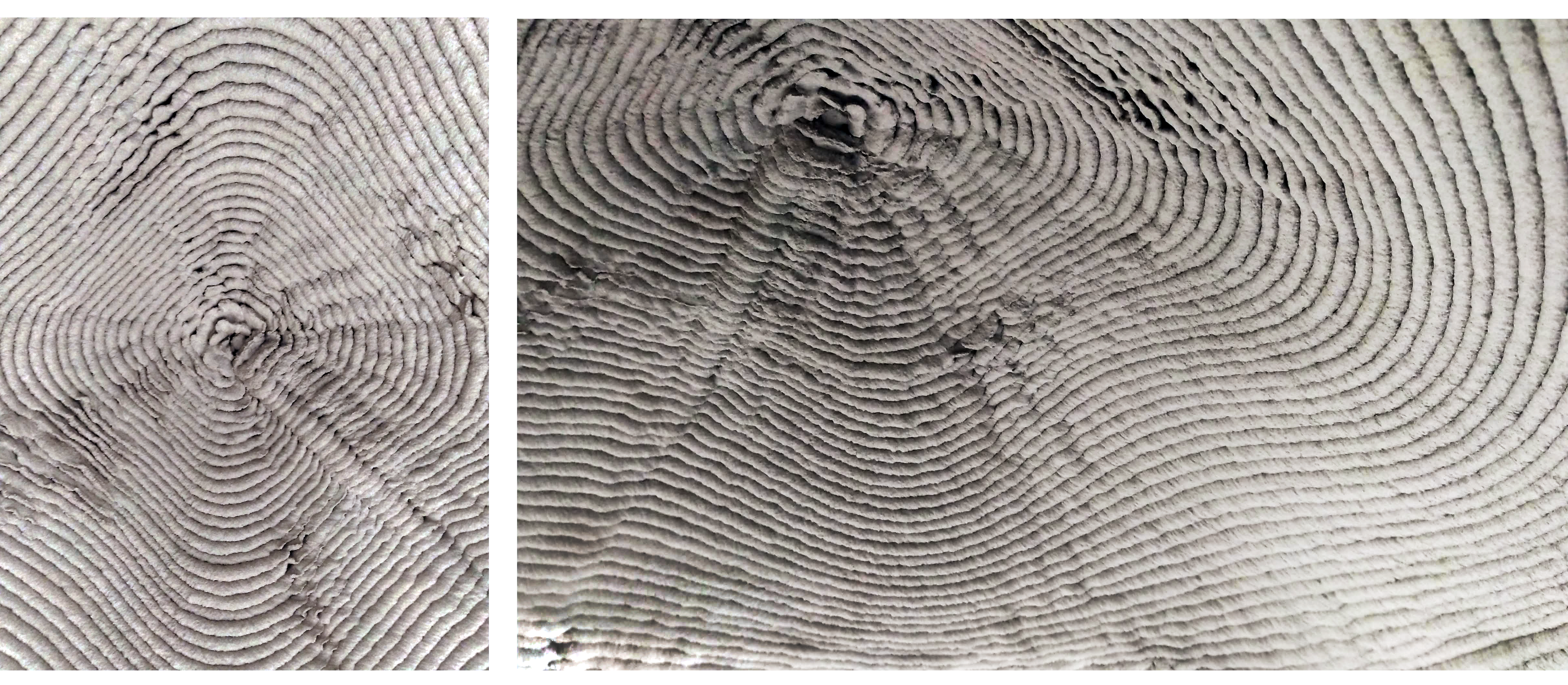Multi-objective optimization of 3D printed shell toolpaths
2020 - 2021
The additive fabrication of shell structures without formwork has the potential to significantly reduce material waste and construction cost, thus minimizing embodied carbon across the concrete construction industry while making an often appreciated but underused typology a feasible construction practice.
Generating vault toolpaths which are stable during construction is a nontrivial challenge. Here, we present a new approach to address this challenge that integrates traditional masonry strategies with advanced simulation and optimization methods. To perform multi-objective optimization of 3D printed vaults, toolpaths are:
(1) orientated perpendicular to principal stress lines,
(2) generated relative to the supported edges of the structure, and
(3) adjusted with parameterized control curves using constrained optimization with a composite objective function.
This composite objective function uses a layer-by-layer mechanical simulation and minimizes both displacement during fabrication and toolpath length. The length of the toolpath is characterized by the material necessary to achieve desired strength and the print time. This model allows the designer to balance structure, environment, and form in the context of fabrication aware structural simulation.
Project team: Sandy Curth, Tim Brodesser, Lawrence Sass, Caitlin Mueller
Open Access Publication here.
Publication: Alexander Curth, Tim Brodesser, Lawrence Sass, and Caitlin T. Mueller. 2021. “Multi-Objective Optimization of 3D Printed Shell Toolpaths.” In Proceedings of the IASS Annual Symposium 2020-21 and the 7th International Conference on Spatial Structures. Guilford, UK: IASS.









MIT Accessibility Information